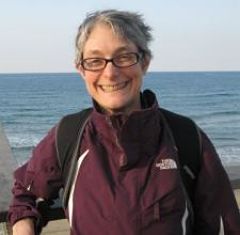Professor
Quantum Information Theory
Ph. D., University of Illinois at Urbana Champaign, 1985
Contact
- Email: behrman@math.wichita.edu
- Phone: 316-978-3953
- Office: 343 Jabara Hall
 Research
Research
Selected Publications
1. N.H. Nguyen, E.C. Behrman, M.A. Moustafa, and J.E. Steck, “Benchmarking neural networks for quantum computation,” submitted to Quantum Information and Computation (2018). arXiv:1807.03253
2. E.C. Behrman, J.E. Steck, and M.A. Moustafa, “Learning quantum annealing,” Quantum Information and Computation 17, 0469-0487 (2017). arXiv:1603.01752
3. E.C. Behrman, N.H. Nguyen, J.E. Steck, and M. McCann, “Quantum neural computation of entanglement is robust to noise and decoherence,” in Quantum Inspired Computational Intelligence: Research and Applications, S. Bhattacharyya, ed. (Morgan Kaufmann, Elsevier, 2016.)
4. E.C. Behrman, R.E.F. Bonde, J.E. Steck, and J.F. Behrman, “On the correction of anomalous phase oscillation in entanglement witnesses using quantum neural networks," IEEE-Transactions on Neural Networks and Learning Systems 25, 1696-1703 (2014).
5. E.C. Behrman and J.E. Steck, “Multiqubit entanglement of a general input state,” Quantum Information and Computation 13, 36-53 (2013).
6. M.J. Rethinam, A.K. Javali, A.E. Hart, E.C. Behrman, and J.E. Steck, “A genetic algorithm for finding pulse sequences for nmr quantum computing,” Paritantra – Journal of Systems Science and Engineering 20, 32-42 (2011).
7. E.C. Behrman, J.E. Steck, P. Kumar, and K.A. Walsh, “Quantum algorithm design using dynamic learning,” Quantum Information and Computation 8, 12-29 (2008)
8. R. Allauddin, K. Gaddam, S. Boehmer, E.C. Behrman, and J.E. Steck, “Quantum simultaneous recurrent networks for content addressable memory,” in Quantum-Inspired Intelligent Systems, N. Nedjah, L. dos Santos Coelho, and L. de Macedo Mourelle, eds. (Springer Verlag, 2008).
9. P.K. Gagnebin, S.R. Skinner, E.C. Behrman, and J.E. Steck, “Quantum state transfer with untunable couplings,” Physical Review A 75, 022310 (2007); selected for the February 26, 2007 issue of Virtual Journal of Nanoscale Science and Technology, available at http://www.vjnano.org; for the February 2007 issue of Virtual Journal of Quantum Information, available at http://www.vjquantuminfo.org.
10. E.C. Behrman, K. Gaddam, J.E. Steck, and S.R. Skinner, “Microtubules as a quantum Hopfield network,” in The Emerging Physics of Consciousness, J.A. Tuszynski, ed. (Springer Verlag, 2006.)
11. P.K. Gagnebin, S. Skinner, E.C. Behrman, J.E. Steck, Z. Zhou, and S. Han, “Quantum gates using a pulsed bias scheme,” Physical Review A 72, 042311 (2005); selected for the October 17, 2005 issue of Virtual Journal of Nanoscale Science and Technology, available at http://www.vjnano.org; for the October 2005 issue of Virtual Journal of Quantum Information, available at http://www.vjquantuminfo.org; and for the October 15, 2005 issue of Virtual Journal of Applications of Superconductivity, available at http://www.vjsuper.org.

